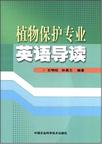植物保护专业英语导读
出版时间:2008-7 出版社:北京科文图书业信息技术有限公司 作者:石明旺,孙喜兰 编著 页数:246 字数:400000
内容概要
进入21世纪以来,生命科学迅速发展,生物技术的发展更是突飞猛进,植物保护学科也出现前所未有的新局面,出现了许多惊人的新成果,引起了学术界的极大关注,同时在数字化的信息时代,由于英语作为一门国际性交流语言和工具,使得许多科技成果都要借助英语进行表述和交流,掌握和了解这些最新成果和应用前景,非常必要和重要。到目前为止,查新未见有正式的植物保护专业英语导读出版,为此我们编选了这本《植物保护专业英语导读》,以飨读者。 本书精选了植物保护学科植物病理学、昆虫学和植物化学保护三个方面不同深度专业论著或论文,深入浅出地阐述该技术领域基础知识和科研成果,有助于读者提高专业英语理解、阅读及写作水平,起到向导的作用。 为了更好地学习科学知识和科技英语,全书分为PART A、PART B和PART C三大部分,每一单元我们精选15篇左右材料,每篇附有详细的单词、短语注释和参考译文。本书适合研究生、本科学生作为专业英语教材使用,也是科技人员的重要参考资料。 本书是集体劳动的结晶,在编写本书时,我们采用专业教师和英语教师结合。专业教师负责文献取材,并与英语教师共同负责校对编排,文献翻译由专业教师和英语教师共同负责。既注重语言文字的流畅,又注重内容术语的准确,书中难免存在不足和疏漏,再版时纠正。除了编委人员外,还有许多朋友为此书的编写提供了帮助,在此表示感谢。
书籍目录
PART A 1.The Most Successful Life Form on the Planet 2.What is a Locust 3.Classification of Bugs 4.Subterranean Termites 5.Insect Locomotion 6.Fastest Flyer 7.Description of Some Caddisfly Larvae 8.Respiratory System of Insect 9.The Rules of Zoological Nomenclature 10.Japanese Beetle 11.Introduction and Philosophy of Biological Control 12.Reduviidae of Medical Importance 13.Bionomics and Management of Anastrepha(Diptera) 14.Feeding Habits of Armored Scales 15.Integrated Pest Management of Tortricids in European Apple OrchardsPART B 1.Some Characteristics of Pesticides 2.The Development of a New Pesticide 3.Pesticide Application and Water Quality 4.Weed 5.The Uses and Formulation of Herbicides 6.Chemical Weed Control 7.Chemical Control of Viruses 8.The Pesticide Controversy 9.Environmental Toxicology 10.Residual Amounts of Organophosphate Insecticides in Plant Products 11.Toxic Hazards to Man 12.Food Chains 13.Introduction of Herbicide Resistance in Plants 14.Pyrethrum 15.Types of PesticidesPART C 1.How Diseases Are Identified 2.Principles of Plant Disease Control 3.Plant Disease Diagnosis and Management 4.Control Measures of Bacterial Diseases 5.Molecular Plant Pathology 6.Vegetable Diseases Caused by Soilborne Pathogens 7.Pathogens 8.Signal Transduction Pathways and Fungal Disease Control 9.Requirement of Functional Ethylene—Insensitive 2 Gene for Efficient Resistance of Arabidopsis to Infection by Botrytis cinerea 10.Epidemiology 11.Wheat Leaf Rust 12.Diseases Caused by Abiotic(Nonliving, Nonparasitic, or Noninfectious)Agents 13.Wilting 14.Phytophthora Root Rot
章节摘录
Biology of Soilborne Pathogens Survival.A soilborne pathogen‘s ability to survive in soil depends in part on the biological group to which it belongs.Few bacterial pathogens are true.10ng-term soil inhabitants;most sur。 vive for limited periods as saprobes on plant debris or roots,or directly in the soil.These species’ bacterial cells do not produce resilient endospores and the vegetative cells are not particularly re- silient in adverse environments.Some species survive by secreting slimy material that dries to form Drotective layers around the cells,enabling them to withstand unfavorable conditions. Fungal pathogens survive in soil as saprobes on host plant debris or on other types of organic matter present in soil,or as free.1iving organisms living directly in the soil.Many of these fungi Droduce resilient survival structures on organic materials;the structures are released into the soil by tillage operations and through decomposition of the infected material.Survival structures can withstand low or high temperature extremes,dry conditions,and periods when no suitable host is Dresent.Environmental factors,however,may affect how long the survival structures remain Via。 ble.The sclerotia of some root.infecting pathogens can be sensitive to desiccation.Low soil temper? atures can be detrimental to pathogens that are adapted to warmer conditions.Such conditions can limit the development of pathogens such as Macrophomina phaseolina on beans and Sclerotium rolfsii on various crops.Distribution of pathogens in soil.The horizontal and vertical distribution of soil.borne pathogens depends on production practices,cropping history,and a variety of other factors.Along a vertical axis.the inoculum of most root pathogens lies within the top 1 0 inches of the soil profile,the layers where host roots and tissues and other organic sub strates are found.On the horizontal plane.distribution of inoculum in a field is usually aggregated in areas where a sus- ceDtible crop has been grown:survival structures produced in diseased tissues are likely to remain in the area where the affected hosts have grown.Because tillage operations involve fragmenting, moving,and burying plant residues,tillage can result in the vertical and horizontal redistribution of pathogens.Pathogen propagules can be moved both deeper and shallower in the soil profile. Deeper-placed propagules can have adverse effects on the survival of these structures.On the other hand。exposure to heat,cold,and drying may kill pathogens that have been brought to the soil surface.On a horizontal scale,tillage redistributes inoculum that was at first present in just a few infested areas and spreads it throughout the field.Eventually,the inoculum produced after each susceptible crop could be spread to previously uninfested areas,contributing to increased disease on succeeding crops.
图书封面
评论、评分、阅读与下载
用户评论 (总计1条)
- 适合学习不错
